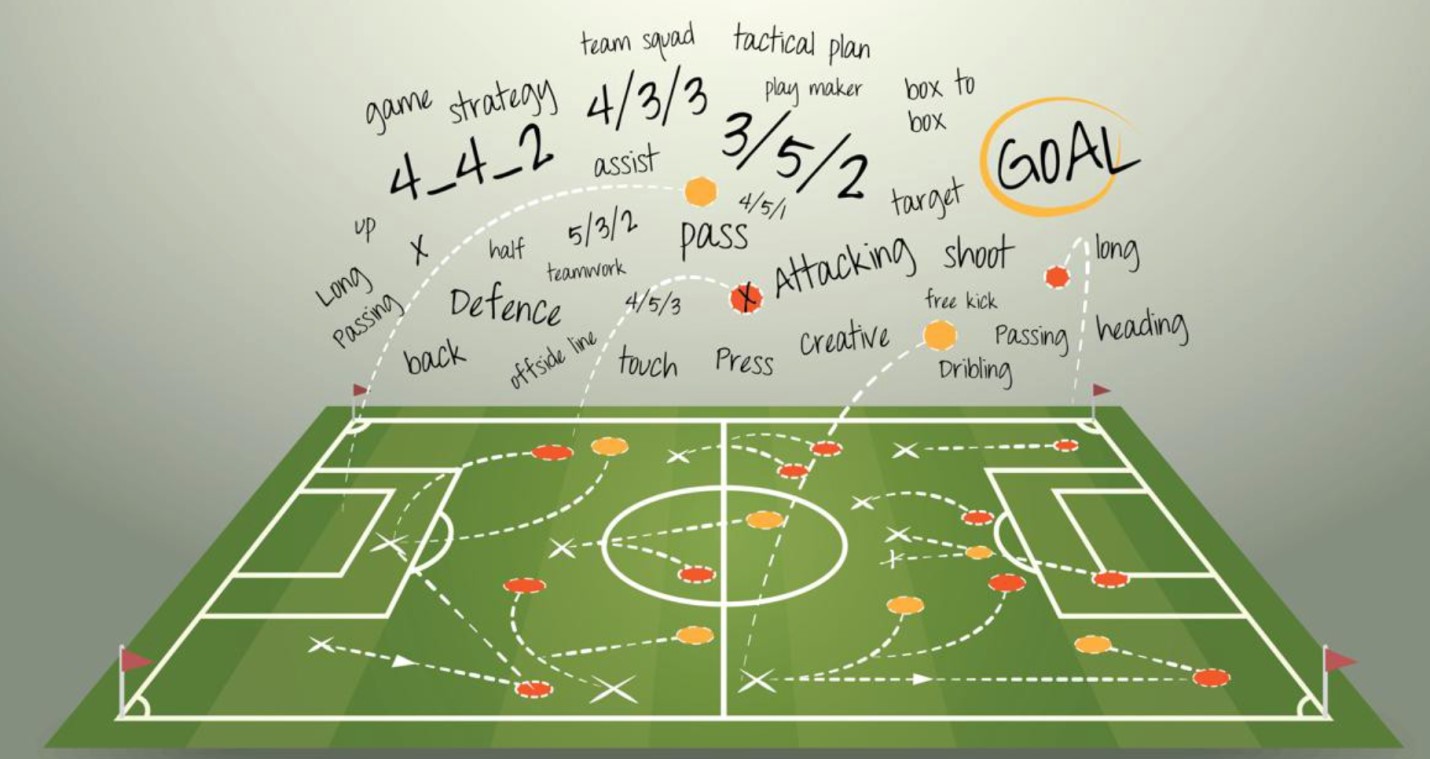The development of football tactics: traditional formations vs modern strategies
Tracking the evolution of modern football strategi

Tracking the evolution of modern football strategies is extremely interesting, offering clues on the next tactical innovation and providing a central repository of all the best tactics used throughout history. From the all-out-attack formations of the 1800s to the highly organised and data-driven setups favoured by modern managers, football has seen multiple evolutions over the past century and a half.
And it’s not just football enthusiasts’ curiosity that can be piqued by delving into the history of football formations and tactics. Learning about the way football formations have changed can also set people up for more accurate season betting tips, as the historical formations enable bettors to react better to potential matchups.
The article below will go into detail regarding the development of football tactics, juxtaposing traditional formation with more modern strategies. Keep reading for the lowdown.
The early years: 19th-century rugby influences
In the early 1800s, football was still very close to its offshoot and at-the-time close cousin, rugby. Formations would often look like a 1-1-8 shape, with teams prioritising the attack before all running back together if the ball was lost.
Imaging placing over 2.5 match goals bets in these early days – teams often playing with just one defender would regularly concede (and score) numerous goals, with early scorelines often going into double digits.
The Scottish connection: early proponents of the passing game
Early football tactics also didn’t account for all that much passing. In fact, among many circles, passing the ball was considered a bit of a cop-out, as the general zeitgeist was to dribble and score goals due to individual skill.
This started to change with the Scottish football team, which began playing a possession-based passing style that would often bamboozle opponents. Teams like Preston North End and Blackburn Rovers leant heavily on Scottish players during the 1880s, utilising their pioneering passing game to great effect.
The emergence of early formations
Even with the Scottish passing game, formations were pretty limited back in the late 19th century. This started to change as the years went on, with Wrexham’s landmark use of a 2-3-5 formation pushing the team to win the Welsh Cup. Commentators at the time marvelled at the formation using “three halfbacks and five forwards”, in an important precursor to the modern midfield.
The introduction of early formations became even more apparent when the FA decided to introduce the offside rule in 1925. Playing highly open and attacking formations had to be far more nuanced after this landmark rule was introduced, also spawning the 4-3-3 and 4-4-2 formations.
Dutch Total Football
The Dutch “Total Football” approach was a revolutionary tactical approach that emphasised fluid movement, quick passing and intricate positional movement. Developed in the Netherlands during the 1970s, this style focused on every player being able to play in any position, leading to a highly adaptable and attacking style of play,
The Dutch national team quickly became known as “The Total Footballers”, emerging as a hugely successful outfit spearheaded by the legendary Johan Cruyff. They reached the 1974 and 1978 World Cup finals, unfortunately losing out on both occasions. Even so, the tactical approach has lived on and inspired various modern managers since.
Age of the 4-4-2
The 4-4-2 formation has become ubiquitous in English football in particular, with this strategy offering a clearly defined balance between attack and defence. While many analysts attribute the formation to England’s World Cup-winning manager Alf Ramsey, it was actually the brainchild of Viktor Maslov.
The Soviet trailblazer adapted Brazil’s highly successful 4-2-4 to make it more relevant for teams with less attacking flair. It has since become one of history’s most popular tactics.
Italian defensive masterclass
Italian football in the 90s was characterised by an emphasis on watertight defensive organisation, with three centre backs and two wing backs creating unparalleled defensive rigidity.
Developed by Italian coaches such as Giovanni Trapattoni and Arrigo Sacchi, these tactics have spawned some of the best defenders in football history. Some notable names include Paolo Maldini, Giorgio Chiellini and Alessandro Nesta. Italy’s World Cup 2006 triumph was built on these defensive strategies, showcasing success on the international stage.
Jürgen Klopp’s heavy metal gegenpressing
Jürgen Klopp’s heavy metal gegenpressing tactics are inspired by a blend of football tactics from the past, most notably the Dutch “Total Football” tradition. This high-intensity tactic prioritises counter-pressing, with the aim being to recover the ball as quickly and as deeply into the opposition’s half as possible.
Klopp’s Liverpool and Borussia Dortmund teams used this tactic to great effect, becoming renowned for their thrilling high-energy styles and controlled chaos.
Pep Guardiola’s box midfield: a homage to the past
Perhaps the greatest tactical innovator of all time, Pep Guardiola has changed the face of modern football several times over. From the tiki-taka approach at Barcelona to experimenting with inverted fullbacks at Bayern Munich, the Catalan manager has proved himself a worthy tactician time and time again.
Manchester City’s treble-winning season was characterised by yet another Guardiola masterstroke. He asked John Stones to step up into midfield from defence, creating a box midfield reminiscent of the old 2-3-5 formations. This allowed City to use five devastatingly talented attacking players while retaining complete control in midfield.







